Table of Contents
ToggleJavaScript code snippets are like the secret sauce of web development. They pack a punch of functionality into bite-sized pieces, making coding feel less like a chore and more like a game. Imagine effortlessly adding cool features to your website while sipping coffee and pretending you’re a coding wizard. Who wouldn’t want that?
Overview of JavaScript Code Snippets
JavaScript code snippets serve as valuable building blocks in web development. Developers utilize these short sections of code to achieve specific tasks, streamline processes, and enhance website interactivity. Efficiency defines these snippets; they allow for quicker coding and debugging, significantly reducing the time required to implement features.
Commonly used across various projects, code snippets cater to numerous functionalities. They can handle form validation, manipulate the Document Object Model (DOM), or implement animations seamlessly. Each snippet is customizable, enabling developers to tailor them to specific needs without writing extensive code from scratch.
The accessibility of JavaScript code snippets fosters a collaborative environment among developers. Many platforms, like GitHub and code-sharing websites, host extensive libraries of snippets. They empower developers to share solutions and gather insights, further enhancing coding practices.
Flexibility characterizes code snippets. Whether a developer is enhancing an existing application or creating a new project, snippets can facilitate rapid prototyping and iterative development. For example, a simple snippet can validate email formats or display alerts, ensuring functionality without convoluted code.
Available in various formats, these snippets often come with comments that explain their purpose and usage. Clear documentation enhances understanding, providing context that helps integrate snippets quickly into projects. Utilizing well-documented snippets minimizes errors and fosters best coding practices.
JavaScript code snippets enrich web development by offering efficient, reusable code segments. Their flexibility, accessibility, and community support make them indispensable tools for developers striving to enhance user experience and streamline development processes.
Benefits of Using JavaScript Code Snippets

JavaScript code snippets offer significant advantages in web development. These benefits include enhanced productivity and code reusability.
Enhanced Productivity
Incorporating JavaScript code snippets boosts developer productivity remarkably. Faster execution of common tasks reduces time spent on coding. Developers can implement features with minimal effort, accelerating project timelines. Frequent use of ready-to-go snippets eliminates repetitive coding, allowing for more focus on complex challenges. Moreover, debugging becomes simpler, as snippets are often tested and proven effective within the community. Leveraging these resources ensures smoother workflows and quicker turnarounds on projects.
Code Reusability
Code snippets promote excellent reusability across multiple projects. Customizable segments can be adapted to different applications without starting from scratch. Developers can save snippets in personal libraries or utilize public repositories for broader access. This feature allows for consistent coding styles and structures, fostering collaboration within teams. Frequent updates to specific snippets ensure compatibility with the latest JavaScript standards. Reusing proven code segments not only streamlines the development process but also enhances overall code quality.
Popular JavaScript Code Snippets
JavaScript code snippets play a vital role in enhancing web development processes. Here are some popular categories that developers often use.
DOM Manipulation Snippets
DOM manipulation snippets simplify tasks like modifying HTML elements and responding to user interactions. Example snippets include changing element text with element.textContent and altering styles using element.style. Utilizing event listeners can enhance interactivity. For instance, element.addEventListener('click', function()) captures user clicks and triggers a function. Snippets also facilitate creating and deleting elements on the fly. Methods like document.createElement('div') create new elements, while parentElement.removeChild(childElement) removes them. These snippets enable dynamic updates without needing to reload the page, significantly improving user experience.
AJAX Request Snippets
AJAX request snippets streamline data fetching without disrupting the user interface. Developers can utilize XMLHttpRequest to send GET or POST requests easily. For example, const xhr = new XMLHttpRequest() initiates a new request. Implementing the xhr.open('GET', 'url') method allows for setting the request type and destination. With the xhr.onload event, developers handle responses seamlessly. Fetching data with the modern fetch API enhances simplicity. For instance, fetch('url').then(response => response.json()) handles promises efficiently, parsing JSON data for usage. AJAX snippets significantly reduce loading times and contribute to smoother application performance.
Best Practices for Writing JavaScript Code Snippets
Writing efficient JavaScript code snippets involves several best practices that enhance clarity and functionality.
Begin with clear naming conventions for variables and functions. Descriptive names improve readability, making it easier for other developers to understand the purpose of each code section. Aim for consistency in naming so the code appears unified across all snippets.
Use comments judiciously. Adding comments within code snippets explains complex logic, guiding other developers who may work on the code later. Ensure each comment remains relevant to the associated code and avoids redundancy.
Keep code snippets short and focused. Aim for single responsibilities within each snippet, which makes them easier to test and debug. When snippets handle numerous tasks, complexity increases, hindering both understanding and reusability.
Implement modular design to foster code reuse. Breaking code into smaller, reusable functions allows for easy integration into different projects, thereby saving time and effort with each new application.
Utilize error handling to maintain application stability. Including try-catch blocks or conditional checks ensures graceful handling of unexpected situations, minimizing crashes and improving user experience.
Follow consistent formatting and indentation practices. This enhances legibility and allows for easier collaboration among developers. Adherence to a specific style guide, such as Airbnb or Google, can streamline this process.
Test snippets thoroughly before use. Checking for functionality ensures snippets perform as intended in various environments, contributing to a smoother integration into projects. Employ tools like Jest or Mocha for automated testing to maintain efficiency.
By staying mindful of these practices, developers can create robust JavaScript code snippets that enhance both productivity and maintainability in web development.
Where to Find JavaScript Code Snippets
JavaScript code snippets are accessible across various platforms that cater to developers. Online repositories are abundant, with GitHub hosting extensive libraries filled with reusable snippets. Developers can explore sites specifically built for sharing code, like CodePen and JSFiddle, allowing real-time experimentation and collaboration.
Search engines yield numerous results when querying for specific snippets. Many online communities, such as Stack Overflow, offer valuable insights and shared code solutions. Users frequently post common issues and their resolutions, making it a practical resource for finding JavaScript snippets relevant to specific challenges.
Moreover, blogs and tutorials often provide curated lists of snippets. Comprehensive guides cover multiple use cases, enabling quick access to code tailored to various functions like DOM manipulation or AJAX requests. Expect to encounter snippets that align with best practices, enhancing overall development quality.
Documentation on snippet libraries enhances understanding. Documentation provides context on how to implement snippets effectively, along with examples that illustrate their usage. Exploring official documentation from libraries such as jQuery or React often leads to discovering innovative snippets that expand functionality.
Additionally, educational platforms often include coding exercises that incorporate JavaScript snippets. Websites like Codecademy and freeCodeCamp provide structured lessons featuring snippets that reinforce learning concepts. By engaging with these platforms, developers strengthen their skills while acquiring practical code snippets.
JavaScript code snippets can be found on repositories, community forums, blogs, and educational platforms. Each of these sources contributes to a comprehensive toolkit that enhances productivity and fosters collaboration among developers.
JavaScript code snippets serve as invaluable assets in the realm of web development. They not only streamline coding processes but also enhance the overall user experience. By leveraging these snippets, developers can boost productivity and maintain high-quality code across projects.
The accessibility of various platforms encourages collaboration and knowledge sharing among developers. With the right practices in place, such as clear naming conventions and thorough testing, these snippets can lead to robust and maintainable code. Embracing JavaScript code snippets ultimately empowers developers to create dynamic and responsive web applications efficiently.




